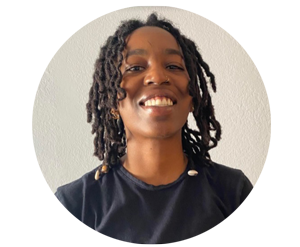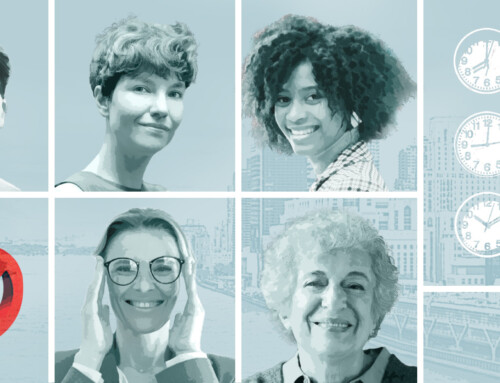Disabilities at work are very common. According to the CDC, 61 million people are living with disabilities in the U.S. If this number seems shocking, remember that some disabilities are less apparent than others. While the most common type of disability is mobility (difficulty walking), there are six primary types of disabilities: mobility, cognition, hearing, vision, independent living, and self-care (difficulty bathing or dressing alone).
The Americans with Disabilities Act (ADA) prohibits discrimination against people with any disability and the Office of Disability Employment Policy (ODEP) requires employers to provide reasonable accommodations to qualified employees. It is estimated that 1 out of every 4 adults has some type of disability, so expect that at least one person on your team may require accommodation at some point.
Working with People with Disabilities
A disability will impact a person’s ability to perform certain tasks and may require additional aid. Some of the most common disabilities at work include the following:
Hearing Impairments
This includes partial and total hearing loss. A person with a hearing impairment may have trouble following along in large meetings without visual aids. Everyday office noises (fans, printers, etc.) can make it hard to hear people speak.
Accommodations
To help support your hearing-impaired coworkers, incorporate some of the following at work:
- Sound amplification systems
- Adequate lighting in workspaces
- Interpreters or note-takers
- Drawings and written visual aids
- Written work assignments
- Repeat questions and statements from other employees during meetings
During meetings, have the presenter speak loudly and carefully. If possible, host meetings in rooms with lower echo. This can be especially helpful for those who use hearing aids. Also, be sure to face the person when talking to them. Speak normally, and do not yell.
If there is an interpreter present, be sure to speak directly to the hearing-impaired person and not the interpreter. Note that some people may find it difficult to keep up with busy, fast-paced presentations that use sign language interpreters, as there is usually some lag between what’s being presented and the interpreter’s comments in real-time.
Blindness/Low Vision
This can include people who are totally blind or legally blind. It may also apply to people who have any trouble seeing. For some people, most written materials may be printed too small to see. Objects may appear blurry or far away which can be particularly exhausting when working.
It may take longer for visually impaired people to learn if they are restricted to visual learning aids. People who cannot see at all will require different accommodations altogether.
Accommodations
People with low vision may appreciate handouts printed with large text or large monitors where text can be enlarged on the screen. This includes work instructions and job announcements. For people with no vision, it may be necessary to have printed materials recorded on audio. This can take time, so be sure to prepare these materials before the person’s start date or beginning of the project.
Learning Disabilities
As previously mentioned, some disabilities are less apparent than others. Learning disabilities can include dyslexia and ADHD. Learning disabilities have nothing to do with intelligence but may limit a person’s ability to demonstrate knowledge.
People with dyslexia may need work assignments given in simple fonts and formatting so they’re easier to read. Other learning disabilities involve an inability to maintain focus. It may be difficult for some people to process too much information at once.
Accommodations
If a person has difficulty maintaining focus, avoid seating them in high-traffic or noisy areas. People may have trouble receiving verbal instructions the first time and would prefer to receive written or recorded instructions to refer to later. Learning disabilities are often worsened by the anxiety of not understanding assignments given in standard format.
More helpful accommodations might include:
- Assign work tasks as to-do lists
- Providing a job coach or mentor
- Providing breaks to allow physical movement
- Minimize less important duties to allow time to master major job functions
People who have trouble concentrating usually need help limiting distractions. These suggestions can help people improve time management and stay on task.
Reducing time pressures and allowing extra time to complete assignments can be especially helpful. If an assignment must be finished by a certain date, assign it early.
Mobility Disabilities
People with mobility disabilities may have no or limited use of their bodies. They may have trouble moving around or using certain equipment in the office. They may require extra time moving between job sites or even from home to the office.
Accommodations
Provide accessible office locations with all work-related materials kept within reach. Some people may also require an office assistant to help with specific tasks such as typing, retrieving documents, or moving around the worksite. It could also be helpful to use computers with digital assistance like voice input and alternative keyboards
Other important things to consider:
- Politely offer help if it seems appropriate. If you would require help in this situation, it makes sense to help. If the person rejects your offer, do not argue.
- Speak at eye level whenever possible. If a person uses a wheelchair, have conversations sitting instead of standing.
- Treat a person’s wheelchair or other equipment as extensions of their body. Do not touch their equipment without their permission.
Conclusion
Working with disabilities at work can be challenging, but we can make it easier by being considerate of others’ needs and abilities. The most important consideration is respect for one another and always providing additional assistance when we can.

By Kendra McFadden | Content Writer
Baltimore-native Kendra McFadden is a graduate of Morgan State University where she received a B.S. in Business Information Systems. She has written in various industries including finance and real estate before turning her eye to marketing and film. She is currently working as a content writer in the IFS Marketing department contributing to the DEI&B Culture Book Diversity Dive series.








